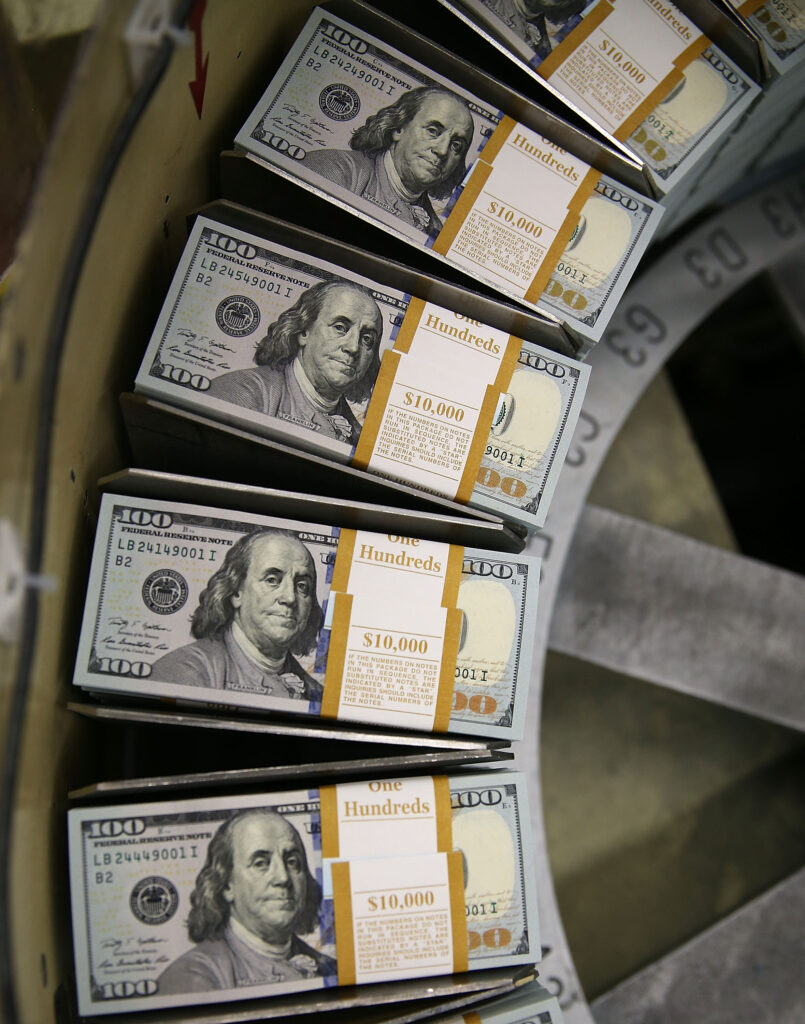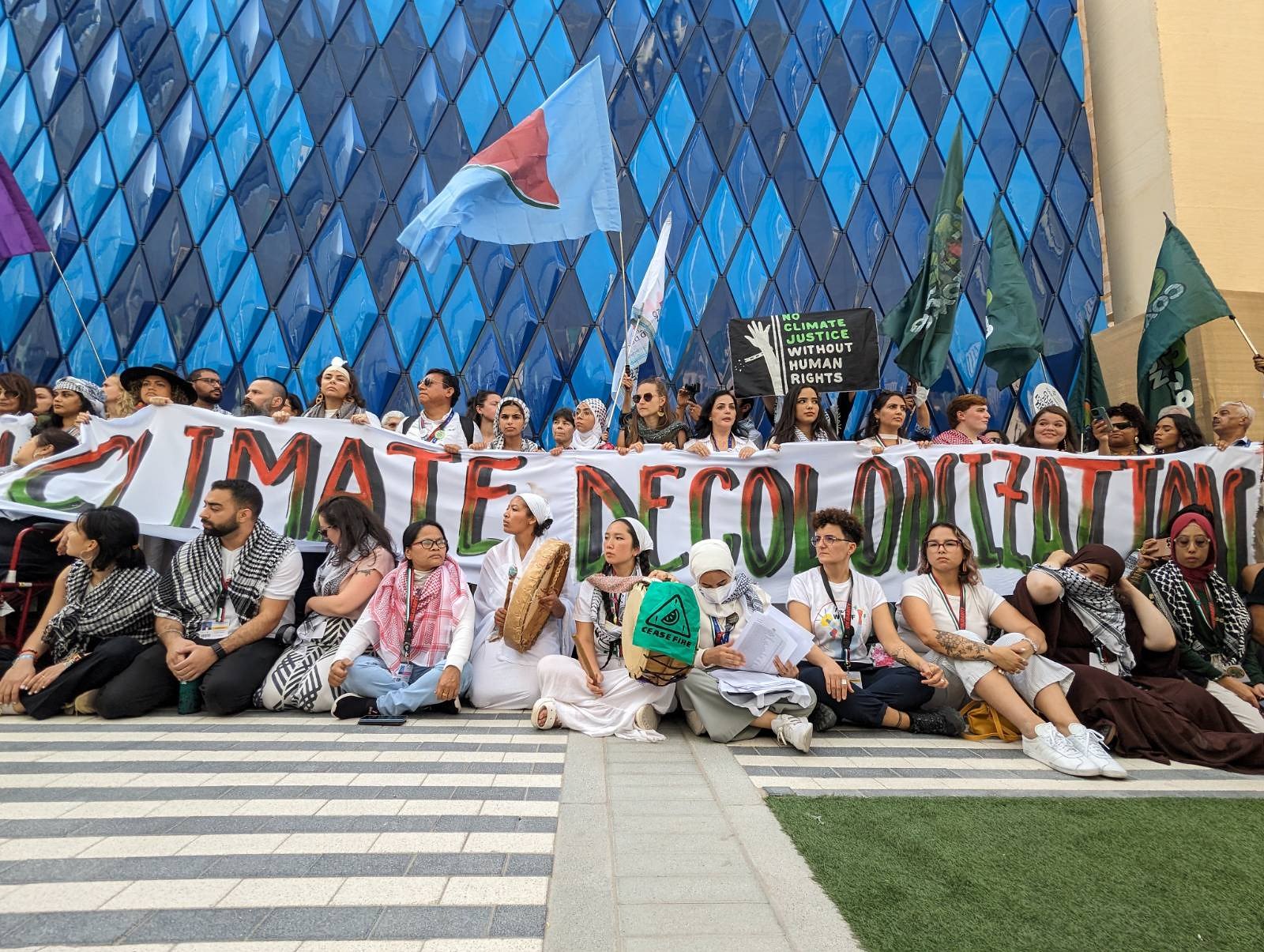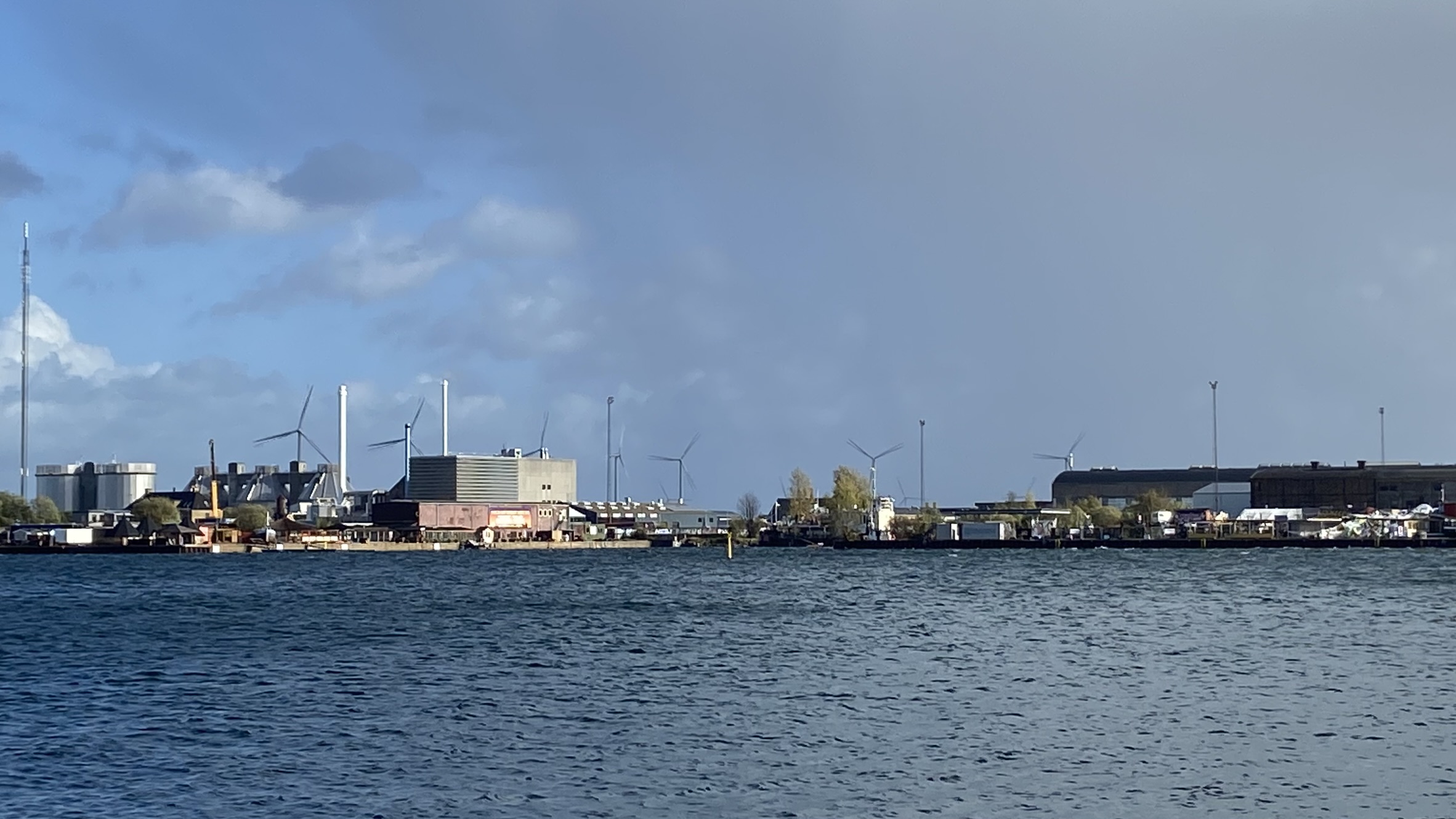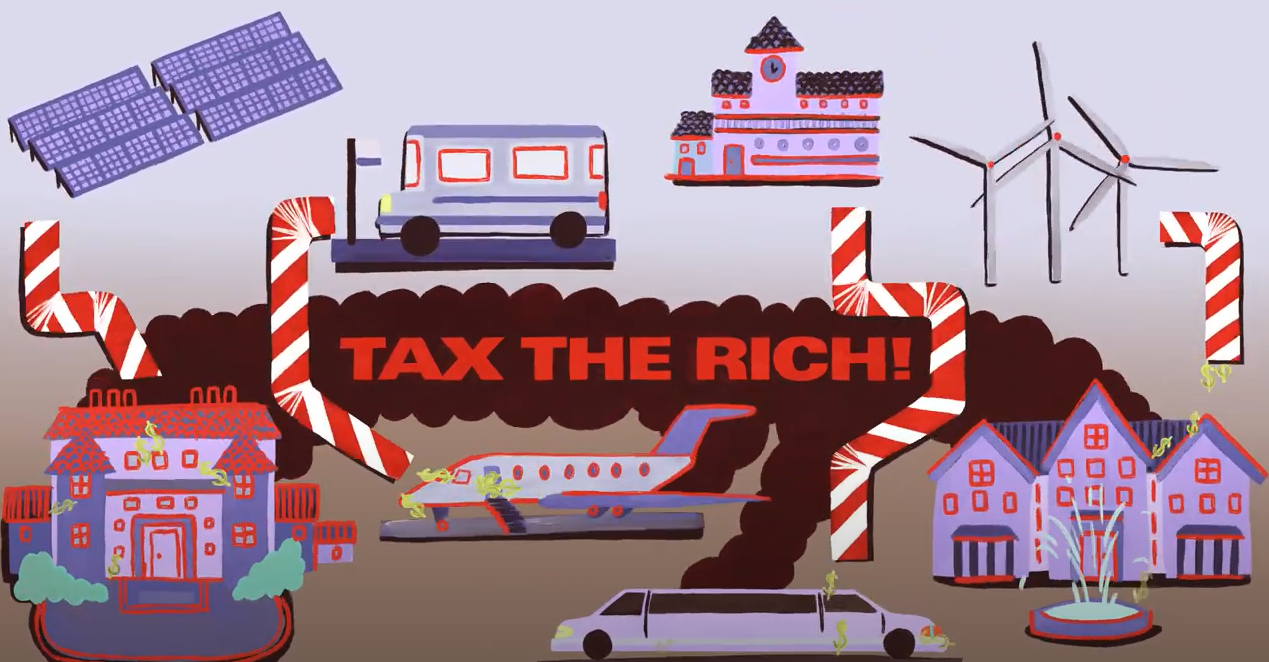Modern Monetary Theory Insights for the Biden Administration
This article is part of our series “On the Precipice: A Progressive Agenda in the Biden Era.” Download a PDF of the full series here.
The pandemic-induced economic crisis in the United States has already exposed a wide range of serious deficiencies in healthcare, broadband infrastructure, and affordable housing, along with a dysfunctional unemployment insurance system, unsustainable levels of consumer debt (student loans, medical debt, credit card debt), fragile supply chain systems, and fractured social safety nets. In this moment, the most urgent government action must be focused on economic relief for people who are unemployed because of the pandemic and who cannot pay their rent or mortgage, their bills, put food on the table, or in many cases cannot afford medical services after losing their employer-provided health insurance.
The good news is that it appears that there is a genuine acknowledgement by the political establishment that more economic relief is needed. They have come to recognize the need for more in addition to the CARES Act that was signed into law in March 2020 ($2.2 trillion) and the most recent Pandemic Relief Bill ($900 billion), which was introduced in December 2020. It is likely that the Biden administration will boost economic relief while it attempts the herculean task of distributing 100 million COVID-19 vaccine doses in the first 100 days of the Biden-Harris administration. However, all of this is simply temporary relief that keeps the economy from slipping into a Great Depression. What it does not do is constitute any structural remedy to the deeper socio-economic and ecological problems that we face. For that we must look elsewhere.
PayGo Must Go
The Biden administration has signaled it is going to push for significant investments in infrastructure, renewable energy, and even some student debt relief, in addition to restoring more rigorous environmental and financial regulations. However, it is unlikely that this administration will be radically different from the Obama administration when it comes to long-term concerns about government deficits and the national debt. Despite having won a simple majority control over the House and the Senate, Democrats have many fiscally conservative members in Congress such as the mini factions of Blue Dog Coalition and the New Democrat Coalition who fundamentally oppose large increases in fiscal deficits.
One of the major self-imposed fiscal constraints that Democrats have adopted in recent years is the so-called PayGo (or Pay-as-you-go) rule, which requires that any new spending be offset either by new taxes or by other budget cuts. Coincidently, this is precisely one of the policy priorities of Republican members of the Tea Party Movement (Tea as in “taxed enough already!”). Therefore, PayGo constitutes the single most significant obstacle facing the progressive agenda in the United States. Thankfully, the 117Th Congress has introduced new revisions this year that will exempt pandemic-related economic and health relief, as well as policies to combat climate change from PayGo rules. This is a slight improvement, but it is not sufficient given that other social spending programs will continue to face the same (if not more) constraints.
It is likely that the COVID-19 economic recovery will be just as slow and painful as the post-2008 recovery, unless we are able to supplement economic relief spending with a comprehensive socio-ecological and economic transformation plan like the Green New Deal.
Unfortunately, the Green New Deal has been vehemently opposed by Republicans as well as the so-called moderate Democrats because of the claims that it is unrealistically ambitious, too expensive, and inflationary. Mainstream economic thinking will immediately validate such claims by linking larger budget deficits and a rising national debt to higher inflation rates, higher interest rates, declining private investment (crowding out effect), government insolvency, bankruptcy, currency depreciation, debt crisis, financial instability, and all around economic collapse.
Dangerously Misleading Fiscal Constraints
The empirical reality of government deficits and debt over the last decade has essentially proven mainstream economics wrong. Japan has a debt-to-GDP ratio of more than 260% (one of the highest in the world), yet it is stuck in a deflationary vicious cycle, has negative interest rates, and shows no signs of government bankruptcy or insolvency despite having faced multiple credit score downgrades by the major credit rating agencies.
The Fed has actually admitted not having a reliable theory of inflation (plain English translation: Fed actually does not know what causes inflation, yet somehow, mainstream economists are sure that a Green New Deal will be inflationary!). Keep in mind that the Fed and all major central banks have been targeting a 2% inflation rate for more than a decade now (Japan for three decades) and have used every trick in the textbook to escape the deflationary pressures without any success. Large deficits and rising national debt are not automatically inflationary and cannot automatically increase interest rates. In other words, mainstream economics is theoretically flawed, empirically incoherent, ideologically biased towards austerity, morally bankrupt, and ecologically dangerous.
So are we doomed? Well, only if we continue to listen to mainstream economists who have been virtually wrong about everything that actually matters: the climate crisis, economic inequality, financial crisis, austerity, unemployment, inflation, private sector debt, racial wealth gap, and much more. But we have an opportunity for a paradigm shift in economic theory and in public policy. We can shift to a Green New Deal program and not worry about all of these faulty economic arguments again if we embrace Modern Monetary Theory (MMT).
The Urgency of a Green New Deal
The 2019 Green New Deal resolution was put forward to address both the climate crisis as well as the inequality and socioeconomic exclusion crises in the United States. These crises cannot be addressed incrementally, but rather with radical and intersectional policies that address the multidimensional roots of the problems of ecological degradation, unemployment, poverty, inequality, racial injustice, and socio-economic exclusion. To paraphrase from Dr. Martin Luther King Jr.’s famous 1963 speech “March on Washington for Jobs and Freedom,” we have no time for the tranquilizing drug of gradualism and incrementalism. He was, of course, referring to the civil rights movement, but our context today not only deals with the existential climate crisis, but also racial and economic inequities that remain deeply structural to this day. Anything short of radical solutions (going to the roots) simply amounts to smokescreen policies that preserve the status quo.
The United Nations’ Intergovernmental Panel on Climate Change (IPCC) report gives us 10 years to act (not think, plan, or debate) on a massive scale to mobilize all of our resources to rapidly decarbonize the global economy in order to keep global warming below the 2°C limit above pre-industrial levels by the end of this century (ideally 1.5°C, but we are already on track to exceed that limit by mid-century). The IPCC report calls for a rapid mobilization and “acceleration of far-reaching, multilevel and cross-sectoral climate mitigation [….] by both incremental and transformational adaptation.” That is what Martin Luther King Jr. would call “the fierce urgency of now.” That is what a Green New Deal ought to urgently deliver at the national level and globally under a Global Green New Deal framework.
Designing a Green New Deal
The Green New Deal framework is inspired by the original New Deal program of the 1930s, which was a comprehensive economic development program funded by the federal government and locally implemented in every congressional district. A core feature of the Green New Deal framework is the Job Guarantee program (JG) which ensures living wage employment with a comprehensive benefits package to anyone who is ready, willing, and able to work.
A Green New Deal must be economically, socially, and ecologically restorative. It must also be comprehensive and permanent so that none of the existing socio-economic deficiencies are allowed to persist or to reemerge after the program is phased out. This is why the Job Guarantee program is so important. The JG operates as a permanent buffer against economic fluctuations that typically hurt the most vulnerable members of society such as the long-term unemployed who tend to be the first to be fired during the recession, and last to be hired during the recovery. The long-term unemployed are often labeled by private sector employers as “unemployable.” They tend to be the most vulnerable in society: women, ethnic minorities, formerly incarcerated individuals, people with disabilities, and people with limited work experience, educational background, and vocational training.
The Job Guarantee program provides a public option in the labor market. It takes people as they are, where they are, and provides on-the-job paid training at a living wage with a broad and comprehensive benefits package that can include assistance with housing, mental health, legal aid, soft skills, family counseling, career counseling, recovery, and rehabilitation services. The goal is to avoid setting people up for failure by offering a job without providing the ecosystem of services that allows them to thrive.
How to Pay for it?
The Green New Deal program is a federally-funded, locally-administered program. Therefore, no financial burden will be placed on local states and municipalities. The conventional wisdom on federal government spending says government spending is limited by the amount of tax revenues and by the willingness of private credit markets to lend to the government. Therefore, the conventional wisdom falsely assume that the federal government’s fiscal policy space is very limited.
However, Modern Monetary Theory (MMT) argues that the fiscal spending capacity of a country like the United States is much higher than what we think. The U.S. enjoys a high degree of monetary sovereignty because it issues its own fiat currency; only accepts its own currency in payment of taxes, and it doesn’t fix the value of its currency to gold, silver, or foreign currencies. MMT never claims that the spending capacity is unlimited. Instead, MMT states that the real constraint that limits a country’s spending has to do with the risk of inflation, which is determined by two factors: the availability of real resources (productive capacity) and the concentration of market power in the economy (abusive price-setting behavior).
The good news is that with adequate planning, strategic investments, and a coherent industrial policy, the U.S. can actually increase its fiscal spending capacity because resources are producible. We can train workers, we can build more productive capacity, and we can acquire higher productivity rates over time. In other words, the first source of inflation risk can be dealt with and can in fact be a source of job creation, economic stability, and shared prosperity.

However, the second source of inflation risk cannot be dealt with by increasing or decreasing spending. Abusive price setting behavior takes place because some firms have excessive market power, so they can raise prices simply because they can, or because lawmakers let them. Think of the market power of Big Pharma, Big Oil, Big Tech, Wall Street, health insurance companies, and real estate companies in the United States.
This inflation risk can only be mitigated by taxing and regulating this corporate market power out of existence. In other words, lawmakers have the legal obligation to democratize those industries. Therefore, from an MMT perspective, the second source of inflation risk is a political economy question about the democratic process, corruption, and about corporate power and influence in politics.
Modern Monetary Theory (MMT)
MMT economists have been very clear about decoupling spending and taxation at the federal level. We should spend on national priorities such as healthcare, education, green infrastructure, affordable housing, broadband, transportation, research and development of green technology, and more efficient renewable energy production and storage. We should tax polluters, financial speculators, abusive price setters, and ultra-rich oligarchs, not because the Federal government (sovereign issuer of the U.S. dollar) needs their money or their permission to launch a Green New Deal, but because we want to decarbonize the system, stabilize the economy, protect democracy from oligarchy, and establish a more sustainable, equitable, and just system.
Unfortunately, orthodox finance rhetoric continues to infiltrate the Green New Deal narrative. It is assumed that there is a limited pool of money at the government’s disposal, so if the military takes some of it, there will be less available for other programs, unless we manage to tax the rich or oil companies to find the money we need for the Green New Deal. This ‘taxpayer money’ and sound finance narrative is not only factually incorrect (Federal spending is not financed via taxes and bonds), but it is also politically counterproductive, and rhetorically dangerous.
MMT reminds us that the federal government (currency issuer) does not have the same financial constraints as local state and municipal governments, households, and firms (currency users). The federal government only faces real resource (productive capacity) constraints. Local government debt, corporate debt, and household debt are real financial burdens that can only be discharged by spending less and/or bringing in more revenue. The federal government spends its own money into existence, but it needs to tax in order to create a demand for its currency and stabilize its value (among other social purposes). The federal government does not need to borrow its own money from rich investors, foreign governments, or future generations.
How did the U.S. pay for World War II?
WWII came right after the Great Depression, which was the most miserable time in U.S. history. There was very little money to be taxed or borrowed during the Great Depression. Yet the U.S. managed a rapid mobilization to enter the war without having taxed or borrowed much at all. The question at the time was not about “finding the money” to pay for the war, but finding the real resources to mobilize for the war effort.
The sale of the war bonds took place during (not before) the war. War bonds leveraged the patriotic mood of the nation in a non-coercive way to convince workers to abstain from consumption during the war. Not buying new homes, cars, and other consumer goods allowed the U.S. to direct more material and labor resources towards the war effort. There were other policy tools including taxation as well as price controls and rationing of key commodities needed for the war. It is the real resources that matter. Money is simply a symbolic representation of the real economic activity that we can produce by mobilizing and organizing our productive capacity.
How did we pay for the CARES Act?
In fact, the way we paid for WWII is the way the federal government always pays for its expenditures. How did we pay for the CARES act? Who did we tax? Who did we borrow from? For years, many people said there was no money for a Green New Deal, no money for Medicare for All, and no money for social and economic justice programs. Then all of a sudden a pandemic hits, and magically 535 elected officials gathered in the Capitol and voted unanimously to approve $2.2 trillion in economic relief. A few days later, the president and treasury secretary announced that “tax day” (April 15) has been postponed to July 15th. In other words, the federal government did not need to borrow or tax anyone in order to respond to the pandemic. It was not about “finding the money.” It was simply about finding the votes in the House and Senate to make it happen.
Then the real work began. We needed to find hospital beds, ventilators, masks, gloves, hand sanitizer, doctors, nurses, medical technicians, scientists and lab researchers to produce vaccines and therapeutics to fight the coronavirus, and an entire logistical infrastructure to distribute the vaccines. These were the real resources needed to fight the pandemic. That is also how we are going to mobilize resources to make the Green New Deal a reality.
The Biden-Harris Opportunity
It is abundantly clear that the Biden administration’s nominees and appointees will heavily mirror the political, economic, and ideological makeup of the Obama administration. We should expect a big spending push in the first few months of this new administration in order to tackle the COVID-19 pandemic and attempt to put a dent in the economic crisis. Biden has made it very clear that he is not going to worry about the deficit or the national debt (for now), which is consistent with what his economic advisors believe (for now).
However, those same economic advisors will almost inevitably turn their attention to the deficit and the national debt, and they will be joined by a small army of Washington political commentators and policy wonks who will make the 2022 midterm elections all about fiscal responsibility. Why? Because it is very easy for the opposition party to make it a key campaign issue.
The anti-MMT pump has already been primed by both establishment Democrats and Republicans who see it as a dangerous idea for the country. Therefore, the Biden administration will quickly face its biggest challenge yet, either reverse course and abide by status-quo neoliberal economic principles and deficit hysteria political strategies, or forge ahead with an MMT-informed economic, social, and ecological agenda to truly deliver on the “Build Back Better” campaign promises.
Now is the time to appeal to Biden’s common sense and sense of decency. When his economic advisors inevitably return to the deficit and debt mania (and they will), we need to focus or rhetoric on shifting the metrics towards the deficits that matter the most (healthcare deficits, educational deficits, infrastructure deficits, jobs deficits, and clean air, water, and soil deficits), and the debts that matter the most (medical debt, student debt, and climate debt). These are the narratives that resonate. The cost of inaction is actually many times more expensive than the financial cost of the Green New Deal. Furthermore, the Green New Deal will accelerate the transition to an economy dominated by greener jobs, which we already know are jobs that offer higher pay, are more resilient during recessions, recover at a much faster pace after a crisis, and are even safer during the pandemic.
In order for the Biden administration to deliver a stronger, more resilient, sustainable, just and prosperous economy, it must permanently abandon the deficit myths, focus on mobilizing real resources for a multipronged, bold, and transformative program like the Green New Deal. It must tax and regulate the abusive price-setting behavior of the most politically connected corporations. It must establish a 21st century Pecora Commission to uproot corruption and restore a competitive economy, and a healthy democratic process. The 535 lawmakers we send to Washington to represent us must uphold the core values of a government of, by and for the People, rather than a government of, by, and for the SuperPACs and the corporate oligarchy. These are the real political constraints that suffocate the spending capacity of the federal government.
The Biden administration will have the opportunity to pilot a truly transformative economic development program in one of the most economically vulnerable (and politically important) regions of the country – Appalachia. ReImagine Appalachia is a blueprint for renewable energy transition, electric grid modernization, green manufacturing jobs, environmental conservation, regenerative agriculture, sustainable transportation, and broadband infrastructure in Ohio, Pennsylvania, Kentucky, and West Virginia. This plan has been endorsed by more than 100 organizations in the region, and has the support of labor unions, NGOs, think tanks, small town mayors, and elected officials. It simply awaits funding from the federal government. ReImagine Appalachia can be launched this year and scaled into a national program in 2022.
Biden can set a higher standard for future administrations, but it will take a tremendous amount of political courage, perseverance, and persuasion. But we have to remember what FDR said “I agree with you. I want to do it. Now, go out and make me do it.” It’s not enough to convince Biden. We have to continue building the popular support for an MMT-informed grassroots movement for a Green New Deal.
Fadhel Kaboub is an associate professor of economics at Denison University, and the president of the Global Institute for Sustainable Prosperity. He has held research affiliations with the Levy Economics Institute, and the John F. Kennedy School of Government at Harvard University. He is an expert on Modern Monetary Theory, the Green New Deal, and the Job Guarantee. His work focuses on public policies to enhance monetary and economic sovereignty in the Global South, build resilience, and promote equitable and sustainable prosperity. You can follow him on Twitter @FadhelKaboub and @GISP_Tweets



